


In the visual effect design of modern architectural landscape, mirror material element is an indispensable link.
Special materials are used to make the building talk with space, reflection and mirror image to create magical space effects and form a unique space experience.
In the hands of designers, the playing methods of mirror materials are constantly enriched.
Today, I give you some commonly used mirror materials, hoping to help you.
01.
Mirror stainless steel

Specification of stainless steel
Mirror stainless steel is to polish the raw materials on the stainless steel plate surface with grinding fluid through polishing equipment, so that the plate surface is flat and the brightness is as clear as a mirror. Mirror stainless steel is one of the most well-known mirror materials. "Mirror" refers to the surface state of stainless steel, which is mostly used for cold-rolled stainless steel plates with thinner specifications.

Stainless steel tips:
Stainless steel is the abbreviation of stainless and acid resistant steel. It is a kind of steel resistant to weak corrosive media such as air, steam and water. It has the characteristics of heat resistance, corrosion resistance and no rust. It is a very good outdoor and indoor material. The commonly used stainless steels are 304, 304L, 316 and 316L. Stainless steel is an alloy material. 316 stainless steel adds more metal molybdenum than 304 stainless steel. This element can more consolidate the molecular structure of stainless steel, make it more wear-resistant and oxidation-resistant, and greatly increase the corrosion resistance at the same time. The carbon content of 304L and 316L is lower than that of 304 and 316, and there is also a clear comparison in the material content table. Stainless steel is mainly the layer of chromium rich oxide film formed on the surface, but intergranular corrosion will occur when the temperature is too high. Therefore, the carbon content in 304L and 316L is small, which reduces intergranular corrosion. In terms of corrosion resistance, 304 < 304L < 306 < 306l, and the price increases in turn. From the perspective of application, 304 stainless steel can meet the daily use requirements of inland cities, while southern and coastal cities with better air humidity and light need 304L or more stainless steel.

Brightness of mirror stainless steel
Common mirror stainless steel is divided into four grades: 6K, 8K, 10K and 12K. Generally, 8K mirror stainless steel has reached the smooth effect of ordinary mirror. 6K stainless steel only has a certain brightness on the surface, which is not called mirror stainless steel.
10K and 12K have the best effect. 12K mirror stainless steel has super clear surface, no grinding head flowers and scratches. It can be said that it is mirror stainless steel with 0 defects. The grinding cost is high, so the price is also high.
Stainless steel is used as the outer skin of indoor and buildings. In addition to the mirror, other common surface treatment processes include wire drawing, sand blasting, titanium plating, etching, anti fingerprint, etc.

Thickness of mirror stainless steel
The thickness of stainless steel 8K 、12K mirror panel can range from 0.3-100mm. The thicker the thickness, the harder it is to reflect the mirror effect. Of course, the higher the processing cost.
Because mirror stainless steel is relatively light and thin, the reflection in plane application will be slightly deformed. It can be used on curved surfaces and has high stability and hardness. However, compared with other mirror materials, it has higher wear resistance and is also convenient for daily cleaning.

Material application
The stainless steel surface of the mirror can form a reflection, and the surrounding scenery can be projected through the mirror to reflect the real content in the form of emptiness. In the landscape design, we can expand the space and enhance the highlights of the scene by adding mirror stainless steel design to form a sense of science and technology and a sense of future.
However, if it is not used properly, it will also form light pollution, easy to wipe flowers, affect beauty and other negative effects, and later maintenance needs to be strengthened. Of course, mirror stainless steel can not be used too much, which will bring people a sense of tension and cause a bad sense of space experience.

Corrugated stainless steel
Corrugated stainless steel is stamped from mirror stainless steel. It is a design material of everyone in recent years.
The working roll is usually processed with erosive liquid. The concave convex depth on the plate is different due to the pattern. The color of the stainless steel water ripple plate is about 20-30 microns. In the manufacturing process, the main body and the coloring layer are integrated to maintain the basic structure and technical performance of the original stainless steel.


02.
Mirror aluminum plate
Mirror aluminum plate is a kind of material of aluminum veneer after mirror treatment. To make the aluminum plate have mirror effect, there are generally polishing, coating, rolling and other processing methods. After the mirror processing of the aluminum veneer, the high-end mirror aluminum plate also has the secondary processing of surface oxidation. Mirror aluminum plates with different processes range from low to high, including film coated mirror aluminum, domestic polished mirror aluminum, imported polished mirror aluminum, imported oxidized mirror aluminum, and super mirror aluminum plates.

Generally, the mirror aluminum plate abroad adopts the rolling method to manufacture coil and plate. The mirror aluminum rolled abroad has better mirror effect and higher price than domestic aluminum. After the secondary processing of oxidation, the maintenance degree of mirror effect will be higher, and the mirror rate without secondary treatment will become lower and lower with time.

Mirror aluminum plate is just a general term. It can be divided into standard mirror, high mirror and super mirror according to the high, medium and low mirror degree of the plate surface. The reflective rate of high-end mirror aluminum plate is generally more than 90%.
The color of mirror aluminum plate can be divided into two categories: basic color and metal color. The basic colors are: Chinese red, orange, green and other colors. Metallic colors include: Champagne, copper, rose gold, light bronze, etc.

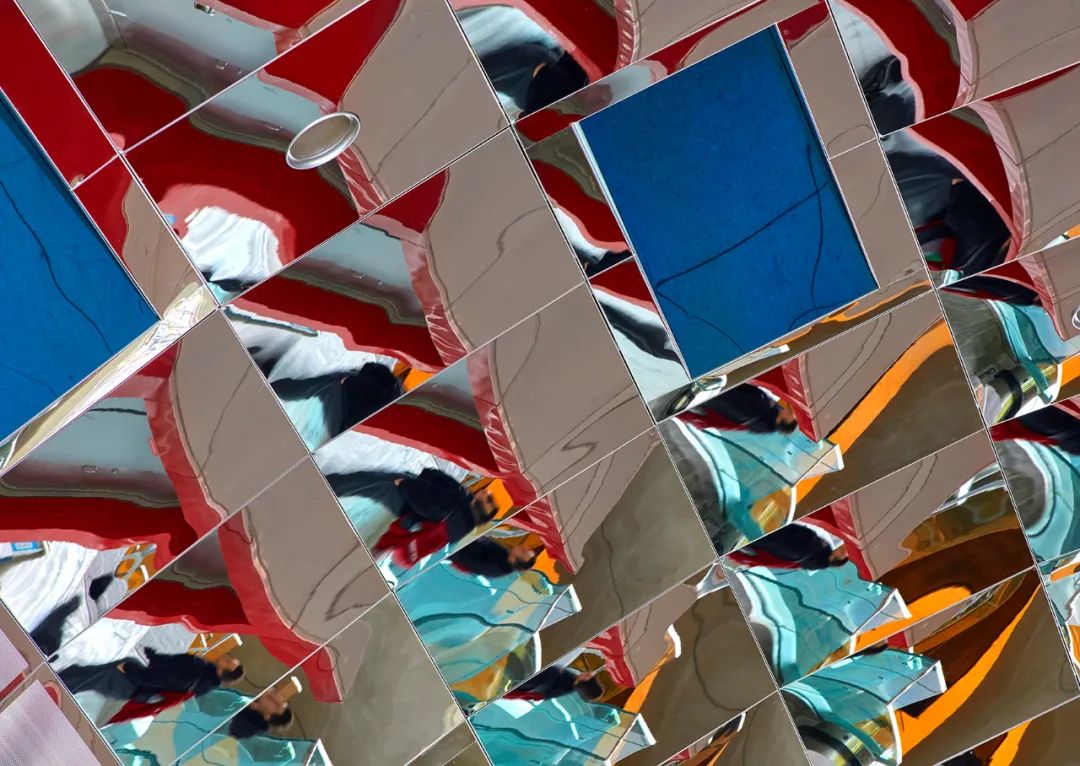
Aluminum plate knowledge:
to a new building decoration material formed by using aluminum alloy plate as substrate, chrome treatment, NC bending and other technologies, and fluorocarbon or powder spraying technology. Aluminum composite plate is a general term, which mainly refers to the composite of chemically treated coated aluminum plate (aluminum veneer) as surface material on suitable base material through various complex processing means, and finally form aluminum composite plate. Common aluminum-plastic plate (plastic + aluminum plate) and metal honeycomb plate (honeycomb metal + aluminum veneer).

03.
Acrylic mirror panel
Acrylic mirror panel is a coating added on the basis of acrylic material, so that acrylic can also have the reflection and imaging effect of glass mirror. It is a good substitute for glass mirror, which is mainly used in indoor environment.
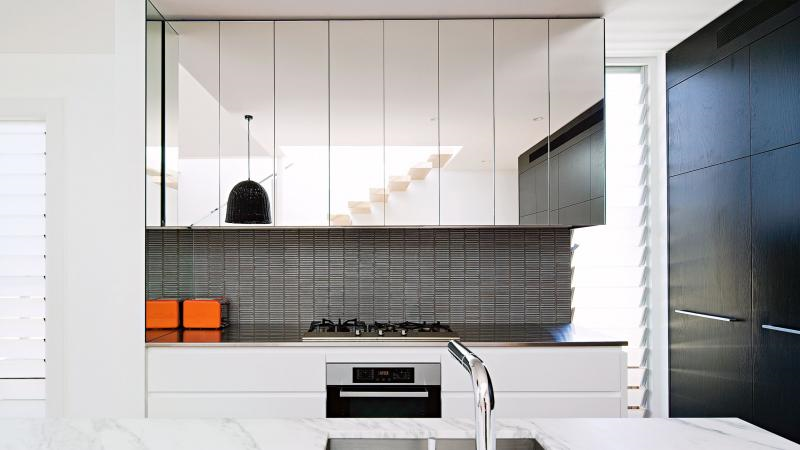
Acrylic mirror material as kitchen door panel
Acrylic mirror material can also be used as door panel. The door panel made of 2mm or thicker acrylic mirror material can be comparable to the glass mirror in mirror reflection effect, which can meet the needs of most consumers who do not pursue the ultimate imaging effect.

Acrylic mirror material as wardrobe door panel
Acrylic mirror panel usage tips:
The wardrobe door panel made of acrylic mirror can partially replace the function of dressing mirror. For consumers who like the mirror effect, the acrylic mirror material can be used as the front material of the door panel. For consumers who do not like the mirror effect, the acrylic mirror material can be used as the back material of the door panel to act as a dressing mirror when opening the wardrobe door.
04.
Application case of mirror panel
BURBERRY flash store
Burberry recently built a "Mirror Palace" on Jeju Island, South Korea. This is a time limited boutique experience store called imaged landscapes, and it is also the first immersive Brand Experience Hall in Burberry. Its appearance is mainly composed of reflective mirror materials, which integrates two different experiences of natural landscape and scientific and technological exploration, and brings a visual effect of a sense of future science and technology.





Reflektor Pavilion, France
Design:Atelier ARI



Boymans van berningen Art Warehouse
Design:MVRDV
The MVRDV design team led by architect and urban planner WY Maas has created a stable and practical bowl structure for the depot. The building presents the best shape from all angles, and establishes a new relationship with the museum park and the urban style of Rotterdam. With the help of mirror skin materials, MVRDV intends to build a building hidden in the city. At the same time, it is also a solid fortress for safe storage of art treasures worth hundreds of millions of euros.

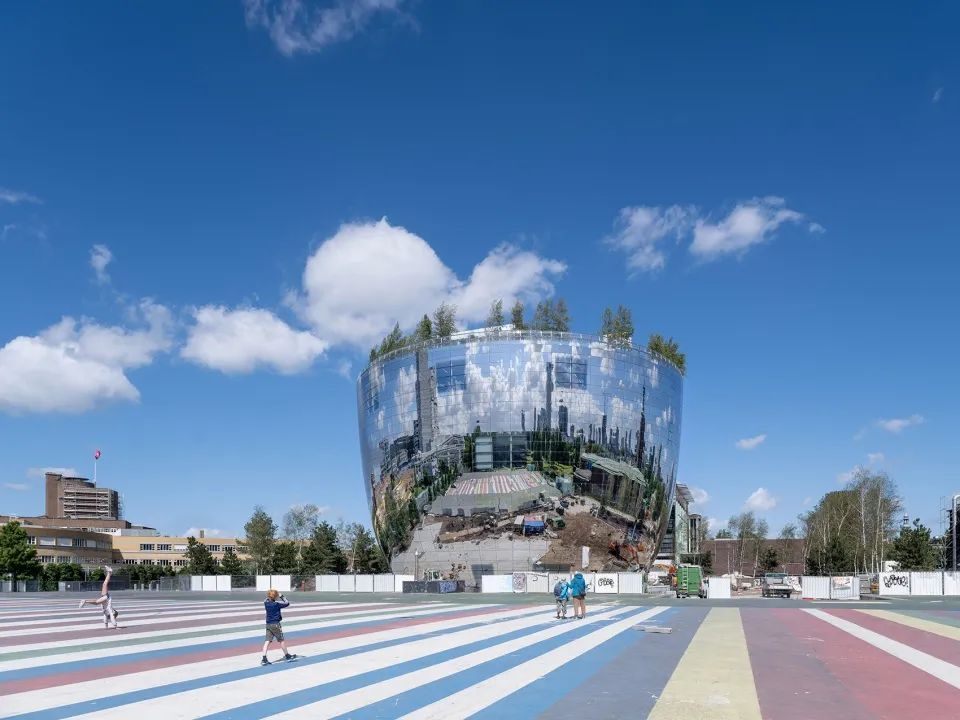
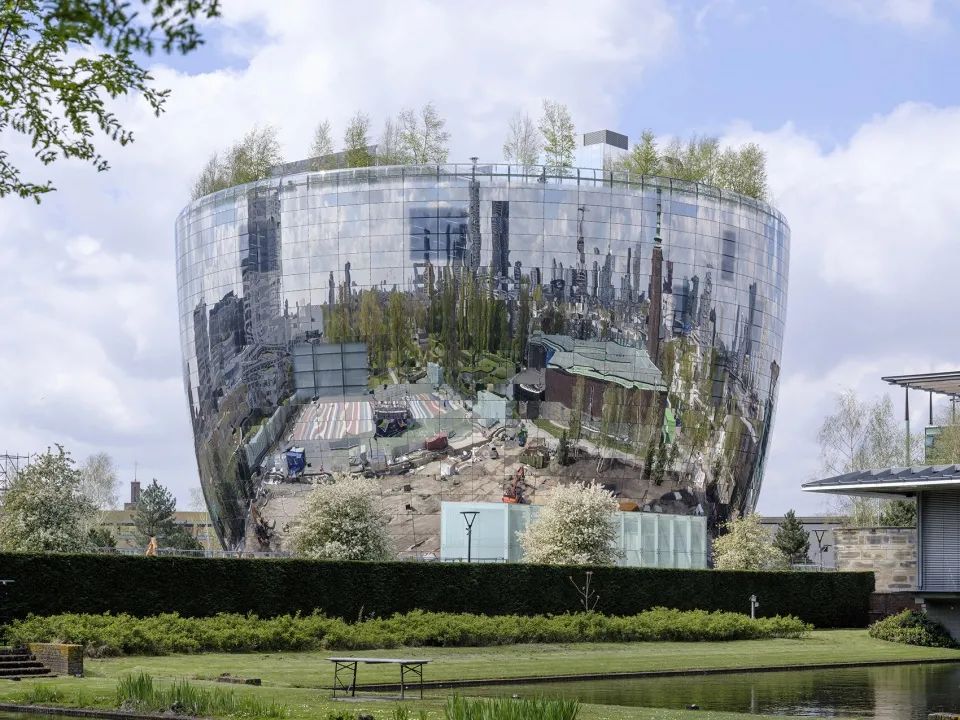
Fangxian xiafangqiao city study
Design:By building
The designer has a big roof above the big steps between the building and the square. Sitting under the big roof can shade and shelter from the rain. It is also the extension of reading space to enjoy the water street from different perspectives. The mirror stainless steel ceiling reflects the activities of people below the square, just like a video recorder, recording every bit of Water Street residents.







National Holocaust Memorial, Netherlands
Design:Studio Libeskind
The north side of the project is the subway and the east side is the street. People can see floating stainless steel blocks at any time. Light and reflection (self reflection and reflection from the streets and surrounding cities) are important for people to understand what happened and lost lives in the Holocaust.
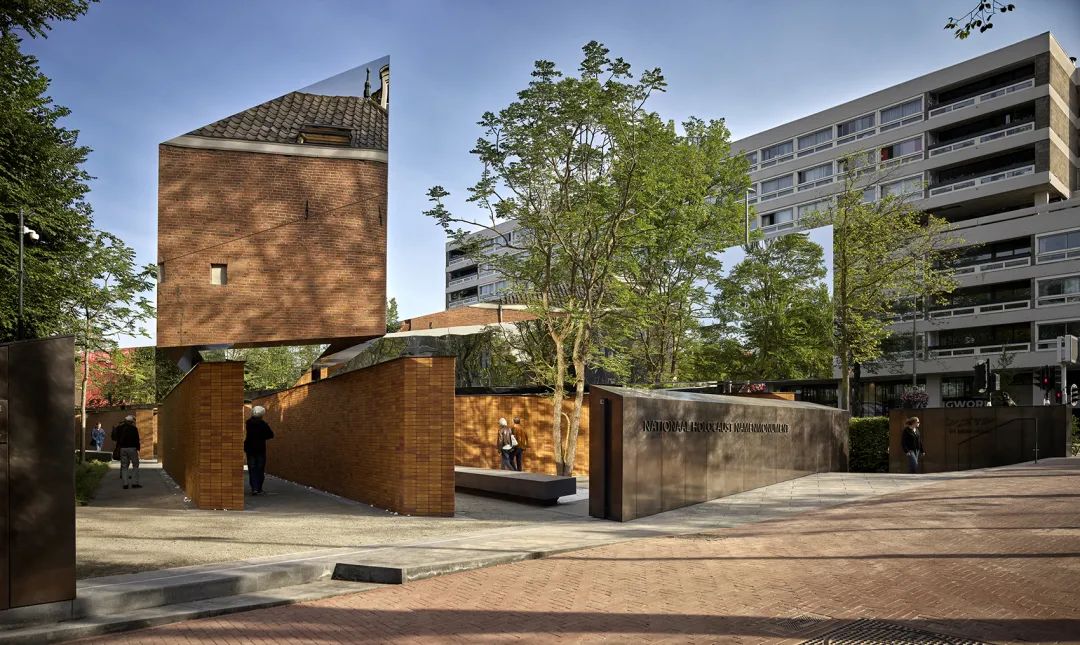


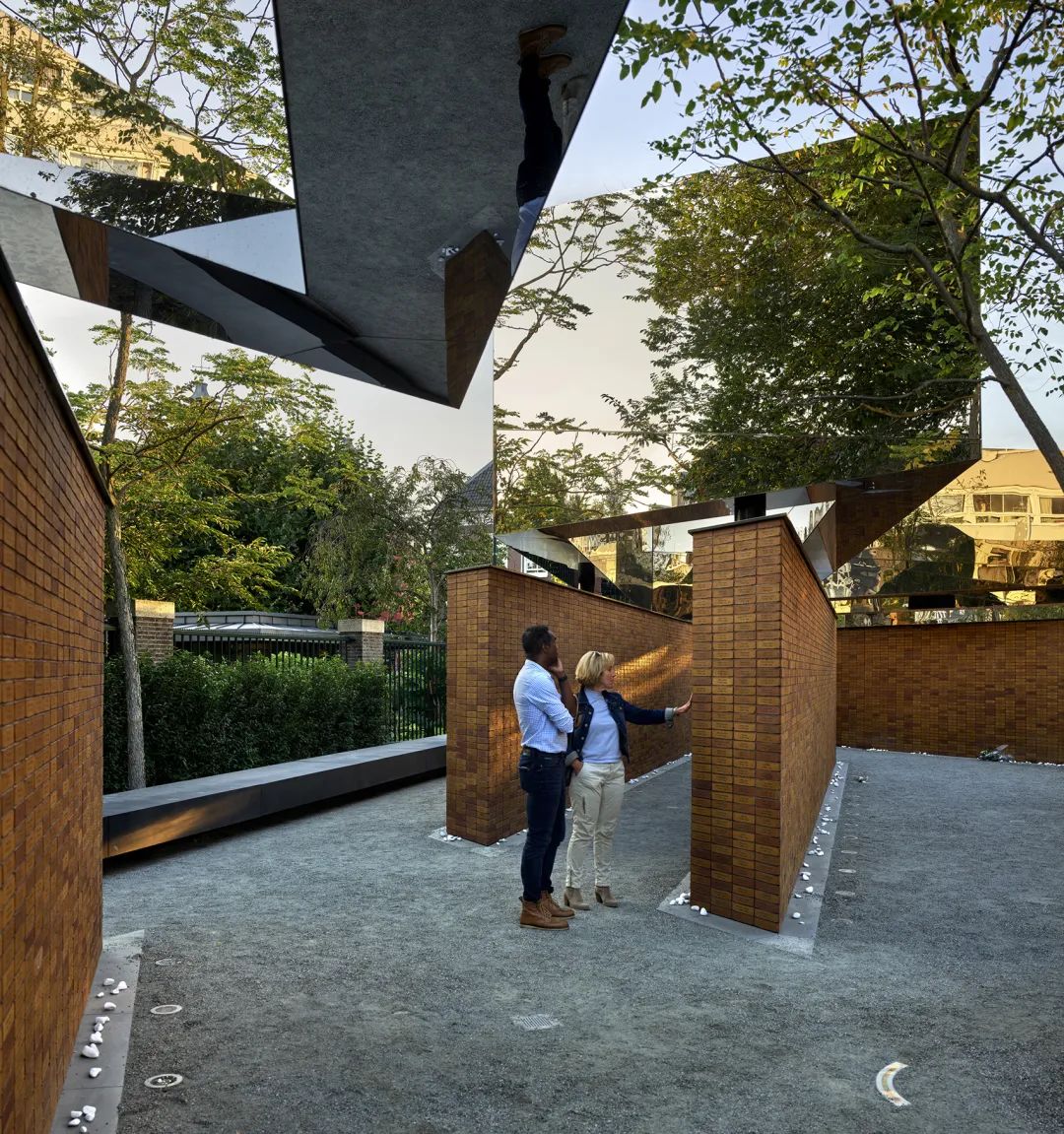
Imagination Pavilion, Seoul
Design:Unsangdong Architects
Imagine that the exhibition pavilion will transform an old watchtower into a new one. The tower is a leisure and entertainment facility, so that people can overlook the urban scenery in nature. The design hopes that the building can not only meet the functional requirements, but also bring new imagination.
The watchtower is supported by structural columns, with stairs on one side and mirror stainless steel ceiling at the bottom, which jointly creates a three-dimensional landscape telescope, so that people can understand the nature of bulam mountain with different emotions and feelings. The unique artificial exhibition pavilion collides with nature, which is expected to bring a new interesting art, culture and entertainment space for watchtower users.

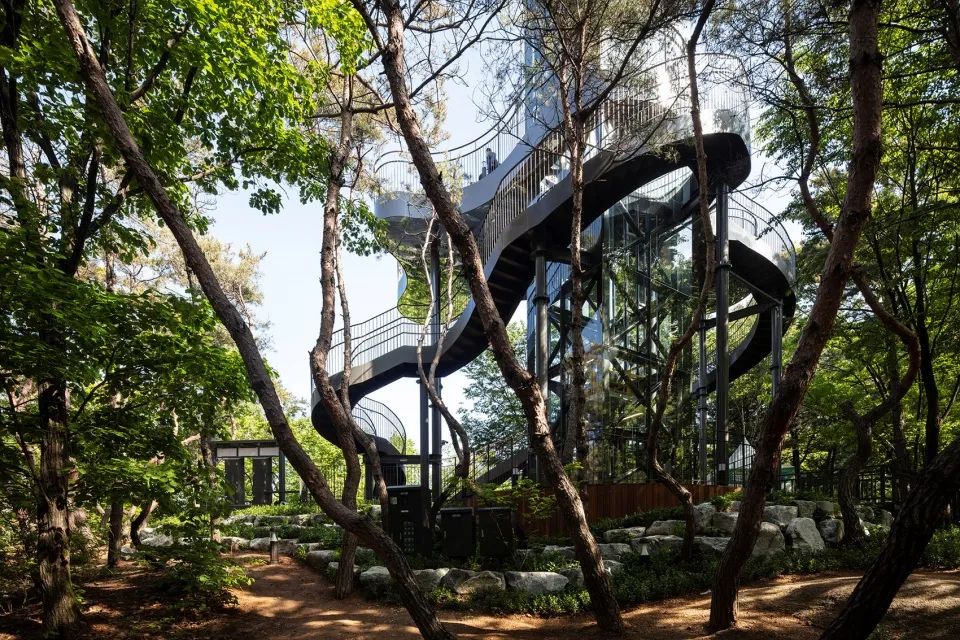

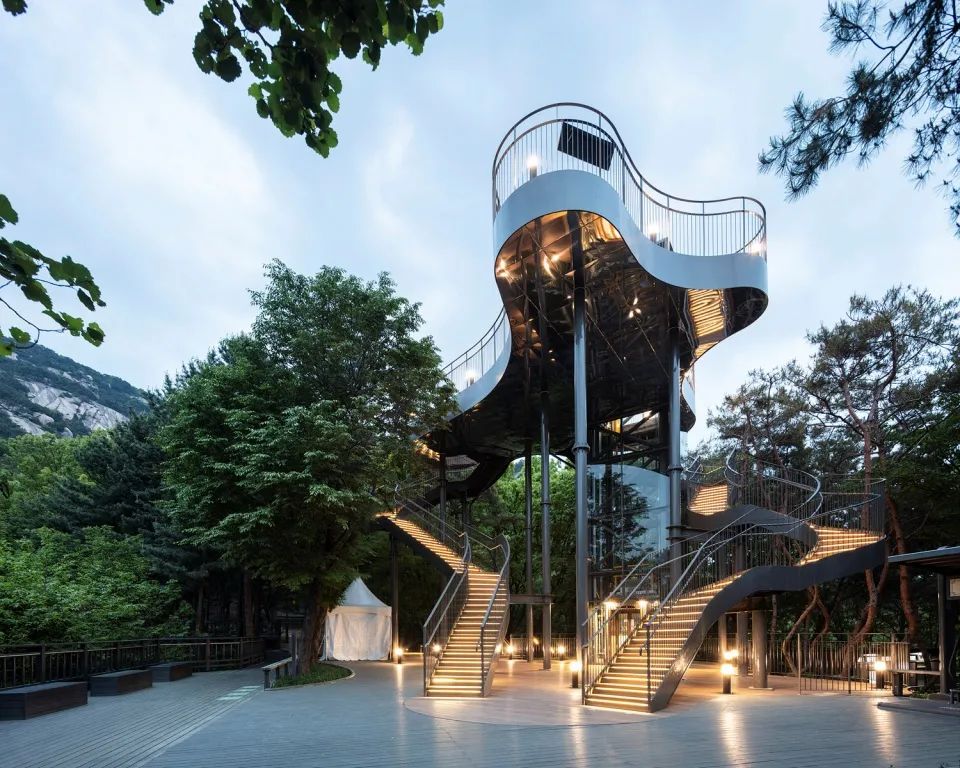


Black square, Moscow
Design:Gregory Orekhov
It produces a fantastic surreal effect by installing two full-length polished stainless steel mirrors on the two halves of the cube. Such steel plates have no finished products in Russia and need to be made through the highest level of processes in the artist's studio. On the other hand, the application of this technology shows a result of competing with the historical process and the so-called progress, and a return to the natural origin.






Curved mirror - building interior design, Sydney
Design:AR-MA
The project is developed from the cloud survey of 3D building concrete. The production documents of all 152 panels are directly output from the model, supplemented by the drafting of construction documents in a conventional way. Each unique stainless steel mirror panel is marked and tracked through various manufacturing processes, multi packaged and finally transported to the site for assembly.



Steirereck restaurant Vienna
Design:PPAG-architects
The exterior skin of the restaurant is composed of large electric sliding window and reflector aluminum plate. It has good indicators in terms of acoustics and thermal comfort, creating an extraordinary but friendly and attractive image. The guests dined in the restaurant as if they were outside. The terrace of the restaurant is directly connected to the park.





Transferred from design materials